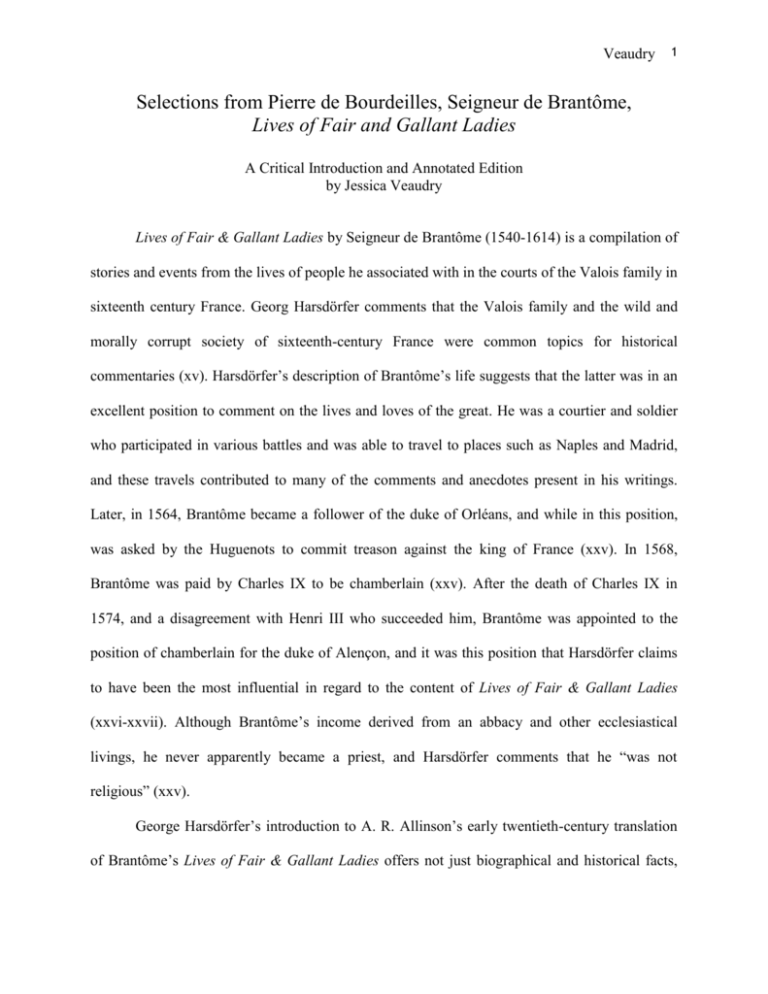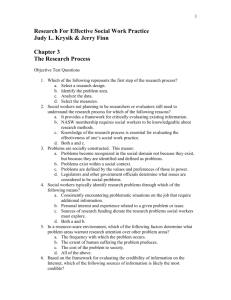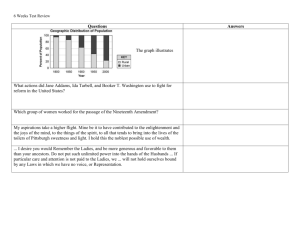
Veaudry
1
Selections from Pierre de Bourdeilles, Seigneur de Brantôme,
Lives of Fair and Gallant Ladies
A Critical Introduction and Annotated Edition
by Jessica Veaudry
Lives of Fair & Gallant Ladies by Seigneur de Brantôme (1540-1614) is a compilation of
stories and events from the lives of people he associated with in the courts of the Valois family in
sixteenth century France. Georg Harsdörfer comments that the Valois family and the wild and
morally corrupt society of sixteenth-century France were common topics for historical
commentaries (xv). Harsdörfer’s description of Brantôme’s life suggests that the latter was in an
excellent position to comment on the lives and loves of the great. He was a courtier and soldier
who participated in various battles and was able to travel to places such as Naples and Madrid,
and these travels contributed to many of the comments and anecdotes present in his writings.
Later, in 1564, Brantôme became a follower of the duke of Orléans, and while in this position,
was asked by the Huguenots to commit treason against the king of France (xxv). In 1568,
Brantôme was paid by Charles IX to be chamberlain (xxv). After the death of Charles IX in
1574, and a disagreement with Henri III who succeeded him, Brantôme was appointed to the
position of chamberlain for the duke of Alençon, and it was this position that Harsdörfer claims
to have been the most influential in regard to the content of Lives of Fair & Gallant Ladies
(xxvi-xxvii). Although Brantôme’s income derived from an abbacy and other ecclesiastical
livings, he never apparently became a priest, and Harsdörfer comments that he “was not
religious” (xxv).
George Harsdörfer’s introduction to A. R. Allinson’s early twentieth-century translation
of Brantôme’s Lives of Fair & Gallant Ladies offers not just biographical and historical facts,
Veaudry
2
but an interpretation of Brantôme’s life, times, and writings. Harsdörfer acknowledges that
Brantôme’s lack of complete historical accuracy somewhat compromises his position as an
historian (xiv-xv), but he concludes that Brantôme’s literary skill outweighs any lack of
historical accuracy (xxx), and that the significance and symbolic value of his work is evident
(xv). Catharine Randall Coats suggests that Brantôme’s perspective is more personal than an
historian’s, and that his intent is creativity and “considerations of the self” rather than historical
narrative (84). This suggestion aligns with Harsdörfer’s suggestion that the value of Brantôme’s
Lives of Fair & Gallant Ladies comes from the biographical portraits that he has constructed
from the gossip and scandal to which he was exposed (xxx). Harsdörfer suggests that Brantôme’s
portraits of the ladies are mainly “mosaics of haphazard observations and opinions,” which
present an interesting, if not accurate, description of courtly life in sixteenth century France
(xxx).
After a horse-riding accident which left him injured and bedridden for almost four years,
Brantôme’s health continued to decline and he died on July 15, 1614 (xxviii). In his will, he
asked for his writings to be published, but his niece and executor, the countess of Duretal,
hesitated to do so because of their somewhat offensive content (xxix). In 1665 and 1666,
Brantôme’s works were finally published under the titles Vies de Dames illustres and Vies des
Dames gallants (xxix). The edited selection presented here was translated by A. R. Allinson and
published in 1933.
The only references to female same-sex eroticism and activity in Lives of Fair and
Gallant Ladies occur in a brief section in Chapter 13 and the whole of Chapter 15. In addition,
Brantôme’s discussion of female homosexual occurs exclusively in the context of the subject of
adultery, and he does not show much interest in or concern for female homosexual activity in its
Veaudry
3
own right. Valerie Traub analyzes Brantôme’s references to female same-sex activity and notes
that his comments provide insight into how the concept of chastity was viewed as the main
concern for any female sexual activity in the sixteenth century (54). Brantôme suggests that
female same-sex activity occurs only as a substitute for sexual activity with men, and he does not
assert that same-sex attraction could completely displace heterosexual attraction. Traub explains
that in the sixteenth-century “women in lust are, in humoral psychophysiology, too hot, and in
danger of upsetting their humoral balance, [and thus] it makes sense to Brantôme that they
relieve themselves of their excess heat in a manner that will not result in pregnancy” (54-55);
thus, Brantôme partly supports the idea that sexual activity between women is a fitting
alternative to heterosexual adultery (54-55).
Interestingly, Brantôme actively addresses and rejects the common sixteenth-century
opinion that a married woman who ‘counterfeit[s] a man’ with another woman (i.e., through the
use of phallic prostheses) engages in adultery; instead, his comments suggest that he sees female
same-sex activity as fitting within the parameters of chastity (Traub 55). The question of whether
two women together can commit adultery is raised in reference to Martial’s Epigrams, and
although Brantôme maintains in this context that female homosexual activity may lead to a
woman’s eventual attraction to and sexual activity with a man, he still insists that female samesex activity alone does not constitute adultery. Brantôme’s conclusion on this subject is
significant because it allows female same-sex activity to occur without the accusation of sodomy,
which was often associated with female homosexual activity when it involved ‘counterfeiting a
man’ or the use of penis substitutes.
Brantôme brings together a variety of historical references to female homosexual activity
along with his own anecdotes, which contribute to the understanding of female same-sex activity
Veaudry
4
in pre-sixteenth century history. Brantôme refers to the classical poetess Sappho of Lesbos and
her activities as a tribade. He also refers to the Martial’s Epigrams, which discuss a woman
named Bassa who was criticized for her homosexual activity. Lucian, the classical Greek writer,
is also mentioned, and Juvenal, the classical Latin poet, both of whom comment on the subject of
tribadism. Brantôme follows these references with comments and experiences of his own
regarding women he has met or heard of who practice or are involved in female same-sex
activities. Brantôme’s overall response to female homosexuality is fairly neutral or indifferent;
his main concern is the question of whether or not sexual activity between females constitutes
adultery. According to Cathleen M. Bauschatz, Brantôme expresses some discomfort with the
power women hold over their husbands with their sexuality (45). Regardless of his discomfort,
he still concludes that as long as sex between women does not lead them to have sexual relations
with men, then female homosexual activity does not threaten social or gender norms.
Commentary on the Text
The first section presented in these selections from Brantôme’s writing depicts
homosexual desire placed in the context of heterosexual activity. The passage depicts a woman
who is sexually aroused by paintings that present naked women fondling each other, and after
looking at the painting, she proposes that her lover take her home quickly, as she can no longer
“hold in the ardour” within her. This homoerotic response corresponds with what Harriette
Andreadis describes as homoerotics among “‘respectable’ women living within the parameters of
a heterosexual economy,” where same-sex erotic activity and desire are available without the
negative association of tribadism (7). This selection is significant, because it shows that female
same-sex eroticism was continuous with the heterosexual desires and relationships women were
Veaudry
5
conventionally expected to engage in. Andreadis discusses this concept, which may seem
contradictory to modern readers, since early 21st century Western cultures tend to differentiate
very rigidly between homosexual desires and practices, on the one hand, and heterosexual
desires and practices, on the other. Andreadis highlights the sixteenth-century understanding of
female same-sex erotics as an expression of passion or “libidinous energy” which could be
separate from the physical nature of same-sex genital activity (97-98). She notes that the modern
binary understanding of homosexual versus heterosexual involves categories which simply were
not identity categories in the sixteenth century (98).
Chapter 15 of Brantôme’s Lives of Fair & Gallant Ladies focuses on various aspects of
female same-sex attraction and activity. Clearly, this chapter’s intent is to answer the question of
whether a married woman who participates in sexual activity with other women is responsible
for committing adultery. Due to the concern surrounding female same-sex activity in relation to
men and heterosexuality, here female homosexuality is only presented and explored in the
context of its relationship to men. The reference to the tribade Bassa focuses much more on the
way her homosexual activities constitute “counterfeiting a man,” rather than on the nature of her
same-sex desires themselves. This concern is again obvious in the comments regarding Philænis
because of her actions of “manly love”. A hierarchy of sexual behavior is set up, as Brantôme
states that it is less demeaning for a woman to play the role of a male “than it is for a man to be
womanish,” and he even suggests that the former may be seen as “valorous and courageous.”
In A. R. Allinson’s translation, Chapter 15 contains two sections of non-translated
French. Traub offers some insight into these sections in the first chapter of her book (36-76).
According to her, the first section of French in Chapter 15 discusses a reference by the Greek
writer Lucian to two methods of female love-making: rubbing, which according to him does no
Veaudry
6
harm; and the use of dildoes, “which can cause loss of life by engendering unnatural growths in
the womb” (55). The second French section describes two court ladies who were caught by a
prince making love with the use of a prosthetic devise that was “so neatly fastened on by little
belts passing round the body that it looked like a natural member.” The prince was so surprised
that he asked them to demonstrate how they did it (55). Both these sections seem to be more
explicit than Brantôme’s other references to female same-sex activity, and this may be why they
have not been translated along with the rest of the text.
Brantôme goes on to discuss female homoerotic and homosexual activity in places other
than France. He refers to Turkish women as active in homosexual activity, which follows a
common theme of sixteenth-century European texts, many of which associate homosexual
behavior and desires with the exotic East or ‘the other.’ Nicholas de Nicholay, for example,
discusses the female same-sex activity he says that he encountered during his travels in the East;
although the accuracy of de Nicholay’s observations are highly-questionable, he does offer the
modern reader some insight into how non-Western (in this case, Turkish) sexual behavior was
understood by a male European observer. Both de Nicholay and Brantôme represent the sexual
activities of women in the Eastern and African worlds, and contribute to the sixteenth-century
discourse surrounding female same-sex activity. These accounts treat female same-sex activities
in a way that allows them to be discussed without directly associating them with the ‘familiar,’
but rather attaching them to the ‘foreign,’ and therefore preventing them from interfering with
Western cultural and social norms. In sixteenth- and seventeenth-century European texts,
tribadism becomes, in short, something endemic to non-Christian, non-Western cultures,
producing in de Nicholay’s and Brantôme’s texts a mutually-reinforcing stigma. Traub
comments that these texts discussing tribadism in foreign cultures present female same-sex
Veaudry
7
activity as a danger (201), but Brantôme seems to be able to reject this representation as long as,
again, female same-sex activity does not lead to adultery with men.
Brantôme attempts to convince his reader that while women may participate in same-sex
activities, if given the opportunity, they will readily move to heterosexual activity. He gives
various accounts of women confessing or proving their preference for sexual relations with men.
These references seem to act as a reassurance to the reader that the threat of female homosexual
behavior is not to be feared, but they still construct tribadism as abnormal and unusual. Brantôme
again categorizes sexuality by placing it in a hierarchy, and classifying women who are
masculine and act like men as ‘better’ than men who are feminine and act like women; he gives
examples of two Roman emperors who were effeminate and thus considered morally corrupt.
These representations of female homosexual activity, and the classification of sexuality,
contribute to the male-constructed discourse surrounding the homosexual activity of women, and
leave little room for its positive representation. Brantôme’s skeptical and finally dismissive
reference to the Book of Beauty by Signor Angelo Firenzuola, a book that contains a passage
stating that women were “created of such nature that some were set to love men, but others the
beauty of one another,” suggests that he ultimately leans towards his culture’s view of female
homosexual activity as abnormal and unacceptable.
Brantôme refers to a variety of female same-sex activities, and while he presents these
activities in stories that display no interest in verifying their historical veracity, he does not
present female homosexual behavior per se in a negative light, but only condemns it if it causes a
married woman’s adulterous relationship with a man. While Brantôme’s representations of
female same-sex activity may be slightly mocking and satirical, he certainly moves away from
Veaudry
8
the common reference to tribadism in the sixteenth century as something to fear, loathe, and
despise.
A Note on the Text
I have chosen not to interfere with the text: I have presented it exactly as it appears in A.
R. Allinson’s 1933 translation, except that I have removed the French sections. These excisions
are referred to by the line of stars in the text (*********). Page numbers from Allinson’s
original are given in square brackets [
], for readers who would like to read further. I have
footnoted various words that are unfamiliar in modern usage and have given brief descriptions of
individuals where they are relevant to the text. All footnote references are courtesy of the Oxford
Reference Online unless otherwise stated. Below are the sources used for this introduction and
the research needed for editing Lives of Fair & Gallant Ladies. Some relevant books have also
been added for additional reading.
Sources and Suggested Reading
Andreadis, Harriette. Sappho in Early Modern England: Female Same-Sex Literary Erotics
1550-1714. Chicago: The University of Chicago Press, 2001.
Bauschatz, Cathleen M. “’Plaisir et proffict’ in the Reading and Writing of Marguerite de
Valois.” Tulsa Studies in Women’s Literature 7.1 (1988):27-48.
Brantôme, Seigneur de. Lives of Fair & Gallant Ladies. Trans. A.R. Allinson. New York:
Liveright Publishing Corporation, 1933.
Coats, Catharine Randall. “Drink Deep from the Text: Wooing and Warning the Reader in
Brantôme’s ‘Dames galantes’ and ‘Dames illustres’.” Modern Language Studies 23.2
(1993): 84-91.
de Nicholay, Nicolas. The Navigations, Peregrinations, and Voyages Made into Turkey. Trans.
T. Washington the Younger. London, 1585. In Homosexuality in Early Modern England,
1550-1660. Ed. Marie H. Loughlin. Kelowna: University of British Columbia-Okanagan,
2007.
Encyclopedia of the Renaissance. Ed. Paul F. Grendler. New York: Charles Scribner’s Sons,
1999.
Veaudry
9
Encyclopedia of the Renaissance and the Reformation. Ed. Thomas G. Bergin. New York: Facts
on File Inc., 2004.
Harsdörfer, Georg. Introduction. Lives of Fair & Gallant Ladies. By Seigneur de Brantôme.
Trans. A.R. Allinson. New York: Liveright Publishing Corporation, 1933.
Juvenal. A new and literal translation of Juvenal and Persius; with copious explanatory notes.
Trans. Rev. M. Madan. London : printed for the editor, 1789. Eighteenth Century
Collections Online. Michigan: Thomson Gale, 2003. 10 April 2007.
<http://galenet.galegroup.com/servlet/ECCO?c=1&stp=Author&ste=11&af=BN&ae=T1
08124&tiPG=1&dd=0&dc=flc&docNum=CW111349876&vrsn=1.0&srchtp=a&d4=0.33
&n=10&SU=0LRK&locID=ubcolumbia>.
Lempriére, John. Lempriere’s Classical Dictionary (1788). London: Bracken Books, 1994.
Martial. Epigrams. Vol. 1. Trans. & Ed. D.R. Shackleton Bailey. Cambridge: Harvard University
Press, 1993.
The NIV Study Bible. Ed. Kenneth Barker. Michigan: Zondervan Publishing House, 1995.
Oxford Reference Online. Oxford University Press. <http://www.oxfordreference.com/
views/GLOBAL.html?authstatuscode=200>, 2007.
Prose Fiction and Early Modern Sexualities in England, 1570-1640. Ed. Constance C. Relihan
and Goran V. Stanivukonvic. New York: Palgrave Macmillan, 2003.
Traub, Valerie. The Renaissance of Lesbianism in Early Modern England. New York:
Cambridge University Press, 2002.
Veaudry 10
LIVES OF FAIR & GALLANT LADIES
By Pierre de Bourdeilles, the Seigneur De Brantôme
FIRST DISCOURSE: OF LADIES WHICH DO MAKE LOVE, AND THEIR HUSBANDS
CUCKOLDS
CHAPTER 5.
In likewise do I remember me how once, in a gallery of the Comte de Chasteau-Villain,
known as the Seigneur Adjacet, a company of ladies with their lovers having come to visit the
said fair mansion, they did fall to contemplating sundry1 rare and beautiful pictures in the Gallery
thereof. Among these they beheld a very beautiful picture, wherein were pourtrayed a number of
fair ladies naked and at the bath, which did touch, and feel, and handle, and stroke, one the other,
and intertwine and fondle with each other, and so enticingly and prettily and featly did show all
their hidden beauties that the coldest recluse or hermit had been warmed and stirred thereat.
Wherefore did a certain great lady, as I have heard it told, and indeed I do know her well, losing
all restraint of herself before the picture, say to her lover, turning toward him maddened as it
were at the madness of love she beheld painted; “Too long have we tarried here. Let us now
straightway take coach and so to my lodging; for that no more can I hold in the ardour2 that is in
me. Needs must away and quench it; too sore do I burn.” And so she did haste away to enjoy her
faithful lover.
Suchlike pictures and portrayals do bring more hurt to a weak soul 3 than men think for.
Another of the same sort there, was a Venus4 naked, lying on a couch and eyed by her son
Cupid5; another, Mars6 a-bed with Venus, another, a Leda7 with her swan. Many other there be,
both there and elsewhere, that are somedel8 more modestly painted and better veiled than the
figures of Aretino9; but all do come pretty much to one and the same, and are of the like nature
with our cup whereof I have been speaking. 10 This last had, as it were, a sort of likeness in
unlikeness to the cup which Renault de Montauban found in the Castle Ariosto doth tell of,11 the
which did openly discover unhappy husbands that were cuckolds,12 whereas this one was more
likely to make them so. But while the one did cause somewhat too great scandal to cuckolds and
their faithless wives, the other had no such effect. Nowadays is no need of these books or these
1
sundry: a number of, several.
ardour: heat of passion or desire, vehemence, fervour, eagerness, enthusiasm.
3
weak soul: could mean either the female sex, or a soul lacking moral strength.
4
Venus: goddess of love, beauty, and fertility worshipped in Rome.
5
Cupid: the Roman boy-god of love, son of Venus and Vulcan.
6
Mars: Roman god of war.
7
Leda: in Greek mythology, she was the Queen of Sparta and Zeus came to her in the form of a swan.
8
somedel: a portion, or part of something.
9
Aretino: (1492–1556), an Italian author and playwright who wrote satiric comedies focusing on the less
creditable aspects of sixteenth century social life; famous for his frank treatment of all aspects of sex and desire;
often considered an ‘obscene’ writer in this period
10
cup whereof I have been speaking: a cup engraved with copulating figures discussed by Brantôme in
Lives of Fair and Gallant Ladies (Coats).
11
See Ariosto’s long chivalric romance, Orlando Furioso, 42.98.
12
cuckold: to make a cuckold of is to dishonor by adultery. Used in reference to women committing
adultery against their husbands.
2
Veaudry 11
pictures, for that husbands teach their wives themselves enough and to spare without them. And
now for the results of suchlike husbands’ schooling! [33-34]
******************************************************************************
CHAPTER 15
NOW will I further ask this one question only, and never another, one which mayhap
hath never yet been enquired into of any, or possibly even thought of,—to wit,13 whether two
ladies that be in love one with the other, as hath been seen aforetime, and is often seen
nowadays, sleeping together in one bed, and doing what is called donna con donna,14 imitating in
fact that learned poetess Sappho,15 of Lesbos, whether these can commit adultery, and between
them make their husbands cuckold.
Of a surety do they commit this crime, if we are to believe Martial in Epigram CXIX of
his First Book16. Therein doth he introduce and speak of a woman by name Bassa,17 a tribad,18
reproaching the same greatly in that men were never seen to visit her, in such wise that folk
deemed her a second Lucretia19 for chasteness. But presently she came to be discovered, for that
she was observed to be constantly welcoming at her house beautiful women and girls; and ’twas
found that she herself did serve these and counterfeit a man.20 And the poet, to describe this, doth
use the words, geminos committere cunnos.21 And further on, protesting against the thing, he
doth signify the riddle and give it out to be guessed and imagined, in this Latin line:
Hic, ubi vir non est, ut sit adulterium,
“a strange thing,” that is, “that where no man is, yet is adultery done.”
I knew once a courtesan of Rome, old and wily if ever there was one, that was named
Isabella de Luna, a Spanish woman, which did take in this sort of friendship22 another courtesan
named Pandora. This latter was eventually married to a butler in the Cardinal d’Armaignac’s
household, but without abandoning her first calling. Now this same Isabella did keep her, and
extravagant and ill-ordered as she was in speech, I have oft times heard her say how that she did
cause her to give her husbands more horns23 than all the wild fellows she had ever had. I know
13
to wit: that is to say.
donna con donna: Spanish, ‘woman with woman’.
15
Sappho: Greek poet from the early 6th century BC who lived on the island of Lesbos (from which the
word ‘lesbian’ derives), and was known for her love for other women.
16
Martial: classical Roman poet, author of fourteen books of epigrams commenting on Roman society,
which according to John Lempriére, are to be read with caution as they may corrupt the purest morals (Lempriére
390). This reference is to Book 1, number 90 in the contemporary organization of the epigrams.
17
Bassa: Martial’s epigram (Bk 1, number 90) accuses Bassa of feigning masculinity in her sexual
activities with other women (Martial 109).
18
tribad: or ‘tribade,’ a term used for women who engage in sexual activity with other women; a lesbian.
19
Lucretia: a Roman lady, whose beauty inflamed the passion of Sextus (son of Tarquin, king of Rome),
who raped her. Lucretia, after informing her father and husband of what had passed, took her own life.
20
counterfeit a man: i.e., through the use of an enlarged clitoris or a prosthetic phallus instead of a penis
(Traub 30).
21
See Martial’s ‘Epigram 90’ (Book 1).
22
this sort of friendship: referring to tribadism.
23
more horns: i.e., the horns of the cuckolded (sexually-deceived) husband
14
Veaudry 12
not in what sense she did intend this, unless she did follow the meaning of the Epigram of
Martial just referred to.
’Tis said how that Sappho the Lesbian was a very high mistress in this art, and that in
after times the Lesbian dames have copied her therein, and continued the practice to the present
day. So Lucian24 saith: such is the character of the Lesbian women, which will not suffer 25 men
at all. Now such women as love this practice will not suffer men, but devote themselves to other
women and are called tribads, a Greek word derived, as I have learned of the Greeks, from
τρίδω, τρίδειν, that is to say fricare. These tribads are called in Latin fricatrices, and in French
the same, that is women who do the way of donne con donne, as it is still found at the present
day.
Juvenal26 again speaks of these women, when he saith:
. . . frictum Crissantis adorat27
talking of such a tribad, who adored and loved the embraces of one Grissas.
The excellent and diverting Lucian hath a chapter on this subject, and saith therein how
that women do come mutually together. Moreover this name of tribad, which doth elsewhere
occur but rarely as applied to these women, is freely employed by him throughout, and he saith
that the female sex must needs be like the notorious Philænis,28 who was used to parody the
actions of manly love. At the same time he doth add, ’tis better far for a woman to be given up to
a lustful affection for playing the male, than it is for a man to be womanish; so utterly lacking in
all courage and nobility of character doth such an one show himself. Thus the woman, according
to this, which doth counterfeit the man, may well be reputed to be more valorous and courageous
than another, as in truth I have known some such to be, as well in body as in spirit.
****************************************
29
Well, by what I have heard say, there be in many regions and lands plenty of such dames
and Lesbian devotees,—in France, in Italy, in Spain, Turkey, Greece and other places. And
wherever the women are kept secluded, and have not their entire liberty, this practice doth
greatly prevail.
The Turkish women go to the baths more for this than for any other reason, and are
greatly devoted thereto. Even the courtesans, which have men at their wish and at all times, still
do employ this habit, seeking out the one the other, as I have heard of sundry doing in Italy and
in Spain. In my native France women of the sort are common enough; yet it is said to be no long
24
366).
25
Lucian: a classical Greek writer who used frequent obscenities and ridiculed Christianity (Lempriére
not suffer: will not endure [to be with men]
Juvenal: classical Latin poet who wrote satires which illuminated the moral corruption of his time
(Lempriére 341).
27
Latin, “she is all in rapture.” (Juvenal 275).
28
Philænis: known for her tribadic promiscuity, she is mentioned in one of Marital’s epigrams as having
penetrated both boys and girls (Andreadis 44).
29
The French section removed here refers to the Greek writer Lucian’s description of methods of female
love-making (Traub 55).
26
Veaudry 13
time since they first began to meddle therewith, in fact that the fashion was imported from Italy
by a certain lady of quality, whom I will not name.
Several others have I known which have given account of the same manner of loves,
amongst whom I have heard tell of a noble lady of the great world, who was superlatively30
given this way, and who did love many ladies, courting the same and serving them as men are
wont.31 So would she take them and keep them at bed and board, and give them whatever they
would. Her husband was right glad and well content thereat, as were many other husbands I have
known, all of whom were right glad their wives did follow after this sort of affection rather than
that of men, deeming them to be thus less wild. But indeed I think they were much deceived; for
by what I have heard said, this is but an apprenticeship, to come later to the greater one with
men.
How many of these Lesbian dames have I seen who, for all their customs and habits, yet
fail not at the last to go after men! Even Sappho herself, the mistress of them all, did she not end
by loving her fond, favourite Phaon,32 for whose sake she died? For after all, as I have heard
many fair ladies declare, there is nothing like men. All these other things do but serve them but
in the lack of men. And if they but find a chance and opportunity free from scandal, they will
straight quit their comrades and go throw their arms round some good man’s neck.
I have known in my time two very fair and honourable damsels of a noble house, cousins
of one another, which having been used to lie together in one bed for the space of three years, did
grow so well accustomed to this, that at the last getting the idea the said pleasure was but a
meagre and imperfect one compared with that to be had with men, they did determine to try the
latter, and soon became downright harlots. And this was the answer a very honourable damsel I
knew did once make to her lover, when he asked her if she did never follow this way with her
lady friend,—“No, no!” she replied, “I like men too well.”
I have heard of an honourable gentleman who, desiring one day at Court to seek in
marriage a certain very honourable damsel, did consult one of her kinswomen thereon. She told
him frankly he would but be wasting his time; for, as she did herself tell me, such and such a
lady, naming her, (’twas one I had already heard talk of) will never suffer her to marry. Instantly
I did recognize the hang of it, for I was well aware how she did keep this damsel at bed and
board, and did guard her carefully. The gentleman did thank the said cousin for her good advice
and warning, not without a merry gibe or two at herself the while, saying she did herein put in a
word or two for herself as well as for the other, for that she did take her little pleasures now and
again under the rose.33 But this she did stoutly deny to me.
This doth remind me of certain women which do thus and actually love these friends so
dearly they would not share them for all the wealth in the world, neither with Prince nor great
noble, with comrade or friend. They are as jealous of them as a beggarman of his drinking barrel;
yet even he will offer this to any that would drink. But this lady was fain 34 to keep the damsel all
to herself, without giving one scrap to others.
’Tis said how that weasels are touched with this sort of love, and delight female with
female to unite and dwell together. And so in hieroglyphic signs, women loving one another with
30
superlatively: in the highest degree.
wont: accustomed [to do]
32
Phaon: legendary boatman of Mytilen (in Lesbos), whom Sappho loved.
31
33
under the rose: privately, in secret, or in strict confidence. The rose is also a common image for the
female genitalia in medieval and Renaissance literature.
34
fain: eager
Veaudry 14
this kind of affection were represented of yore by weasels. I have heard tell of a lady which was
used always to keep some of these animals, for that she did take pleasure in watching her little
pets together.
**************************************************************************** 35
Still excuse may be made for maids and widows for loving these frivolous and empty
pleasures, preferring to devote themselves to these than to go with men and come to dishonour,
or else to lose their pains altogether, as some have done and do every day. Moreover they deem
they do not so much offend God, and are not such great harlots, as if they had to do with the
men, maintaining there is a great difference betwixt throwing water in a vessel and merely
watering about it and round the rim. However I refer me to them; I am neither their judge nor
their husband. These last may find it ill, but generally I have never seen any but were right glad
their wives should be companionable with their lady friends. And in very deed this is a very
different thing from that with men, and, let Martial say what he please, this alone will make no
man cuckold. ’Tis no Gospel text, this word of a foolish poet. In this at any rate he saith true, that
'tis much better for a woman to be masculine and a very Amazon36 and lewd after this fashion,
than for a man to be feminine, like Sardanapalus or Heliogabalus,37 and many another their
fellows in sin. For the more manlike she is, the braver is she. But concerning all this, I must refer
me to the decision of wiser heads.
Monsieur du Gua and I were reading one day in a little Italian book, called the Book of
Beauty, writ in the form of a dialogue by the Signer Angelo Firenzuola,38 a Florentine, and fell
upon a passage wherein he saith that women were originally made by Jupiter39 and created of
such nature that some are set to love men, but others the beauty of one another. But of these last,
some purely and holily, and as an example of this the author doth cite the very illustrious
Marguerite of Austria, which did love the fair Laodamia Fortenguerre,40 but others again
wantonly and lasciviously, like Sappho the Lesbian, and in our own time at Rome the famous
courtesan Cecilia of Venice. Now this sort do of their nature hate to marry, and fly the
conversation of men all ever they can.
Hereupon did Monsieur du Gua criticise the author, saying ’twas a falsehood that the said
fair lady, Marguerite of Austria, did love the other fair dame of a pure and holy love. For seeing
she had taken up her rather than others which might well be equally fair and virtuous as she,
'twas to be supposed it was to use her for her pleasures, neither more nor less than other women
that do the like. Only to cover up her naughtiness, she did say and publish abroad how that her
love for her was a pure and holy love, as we may see many of her fellows do, which do
dissemble their lewdness with suchlike words.
35
The French section removed here describes two ladies who were caught making-love with the use of a
prosthetic devise (Traub 55).
36
Amazon: a tall and strong woman, masculine. Amazonian women were seen as destructive and dominant
over men (Traub 65-66).
37
Sardanapalus and Heliogabalus were Roman emperors who lived lifestyles that were seen as morally
perverse, given their adoption of male lovers, and their dressing in women’s clothing (Lempriére 298).
38
Firenzuola (1493-1543) an Italian writer who lived in Rome and was friends with Pietro Arentino
(Grendler 371).
39
Jupiter: king of the Roman gods, identified with the Greek god Zeus.
40
Laudomia Forteguerri, Italian author of a homoerotic sonnet sequence.
Veaudry 15
This was what Monsieur du Gua did remark thereanent;41 and if any man doth wish to
discuss the matter farther, well! he is at liberty to do so.
This same fair Marguerite was the fairest Princess was ever in all Christendom in her day.
Now beauty and beauty will ever feel mutual love of one sort or another, but wanton love more
often than the other. She was married three times, having at her first wedlock espoused King
Charles VIII of France, secondly John, son of the King of Aragon, and thirdly the Duke of
Savoy, surnamed the Handsome. And men spake of them as the handsomest pair and fairest
couple of the time in all the world. However the Princess did have little profit of this union, for
that he died very young, and at the height of his beauty, for the which she had very deep sorrow
and regret, and for that cause would never marry again.
She it was had that fair church built which lyeth near Bourg en Bresse, one of the most
beautiful and noble edifices in Christendom. She was aunt to the Emperor Charles, and did
greatly help her nephew; for she was ever eager to allay42 all differences, as she and the Queen
Regent did at the treaty of Cambrai, whereunto both of them did assemble and met together
there. And I have heard tell from old folk, men and women, how it was a beauteous sight there to
see these two great Princesses together.
Cornelius Agrippa43 hath writ a brief Treatise on the virtue of women, and all in
panegyric44 of this same Marguerite. The book is a right good one, as it could not but be on so
fair a subject, and considering its author, who was a very notable personage.
I have heard a tale of a certain great lady, a Princess, which among all her maids of
honour did love one above all and more than the rest. At first were folk greatly surprised at this,
for there were plenty of others did surpass her in all respects. But eventually ’twas discovered
she was a hermaphrodite.
I have heard a certain great lady also named as being hermaphrodite. She hath a virile
member,45 but very tiny; yet hath she more of the woman’s complexion, and I know, by having
seen her, she is very fair. I have heard sundry famous doctors say they have seen plenty such.
Well, this is all I shall say on the subject of this Chapter, one I could have made a
thousand times longer than I have done, having matter so ample and lengthy, that if all the
cuckold husbands and their wives that do make them so, were to hold hands, and form a ring, I
verily believe this would be great enough to surround and encircle a good half of the globe.
In the days of the late King Francis an old song was current, which I have heard a very
honourable and venerable dame repeat, to the following effect:
Mais quand viendra la saison
Que les cocus s’assembleront,
Le mien ira devant, qui portera la bannière;
Les autres suivront après, le vostre sera au derrière.
La procession en sera grande,
L'on verra une très longue bande.
41
thereanent: in reference to that matter
allay: put aside, do away with
43
Cornelius Agrippa (1486-1535) was a German lawyer, theologian, and student of the occult (Bergin 5).
44
panegyric: a public speech or published text in praise of a person or thing.
45
virile member: an enlarged clitoris. For a sixteenth century medical perspective on female anatomy, see
Helkiah Cooke’s Microcosmographia: A Description of the Body of Man (1615).
42
Veaudry 16
(But when the season shall come that the cuckolds shall muster, then mine shall march in
front, and shall bear the banner; the rest shall follow after, while yours shall bring up the rear. A
grand sight will the procession of them be,—a long, long train!)
Yet would I not inveigh46 over much against honourable and modest wives, which have
borne themselves virtuously and faithfully in the fealty sacredly sworn to their husbands; and I
do hope anon to write a separate chapter to their praise, and give the lie to Master Jean de
Meung. Now this poet in his Roman de la Rose did write these words:
Toutes vous autres femmes…
Estes ou fustes,
D’effet ou de volonté, putes.
(Ye women every one are, or have been, mere whores, if not in deed, then in desire.)
By these verses he did incur such ill will on the part of the Court ladies of that day, that
by a plot sanctioned of the Queen and with her privity, these did undertake one day to whip the
poet, and did strip him stark naked. But as all stood ready to strike, he did beseech them that at
any rate the greatest whore of all should begin first. Then each for very shame durst not strike
first; and in this wise he did escape the whip.47 Myself have seen the story represented in an old
tapestry among the ancient furnishings of the Louvre. [128-136]
46
inveigh: reproach, censure, rail
This paragraph is reflective of the biblical story which accounts an adulterous woman who was accused
by the Pharisees and was threatened to be stoned, but Jesus defended her by saying: “if any one of you is without
sin, let him be the first to throw a stone” and she was not condemned. (John 8:3-11).
47








